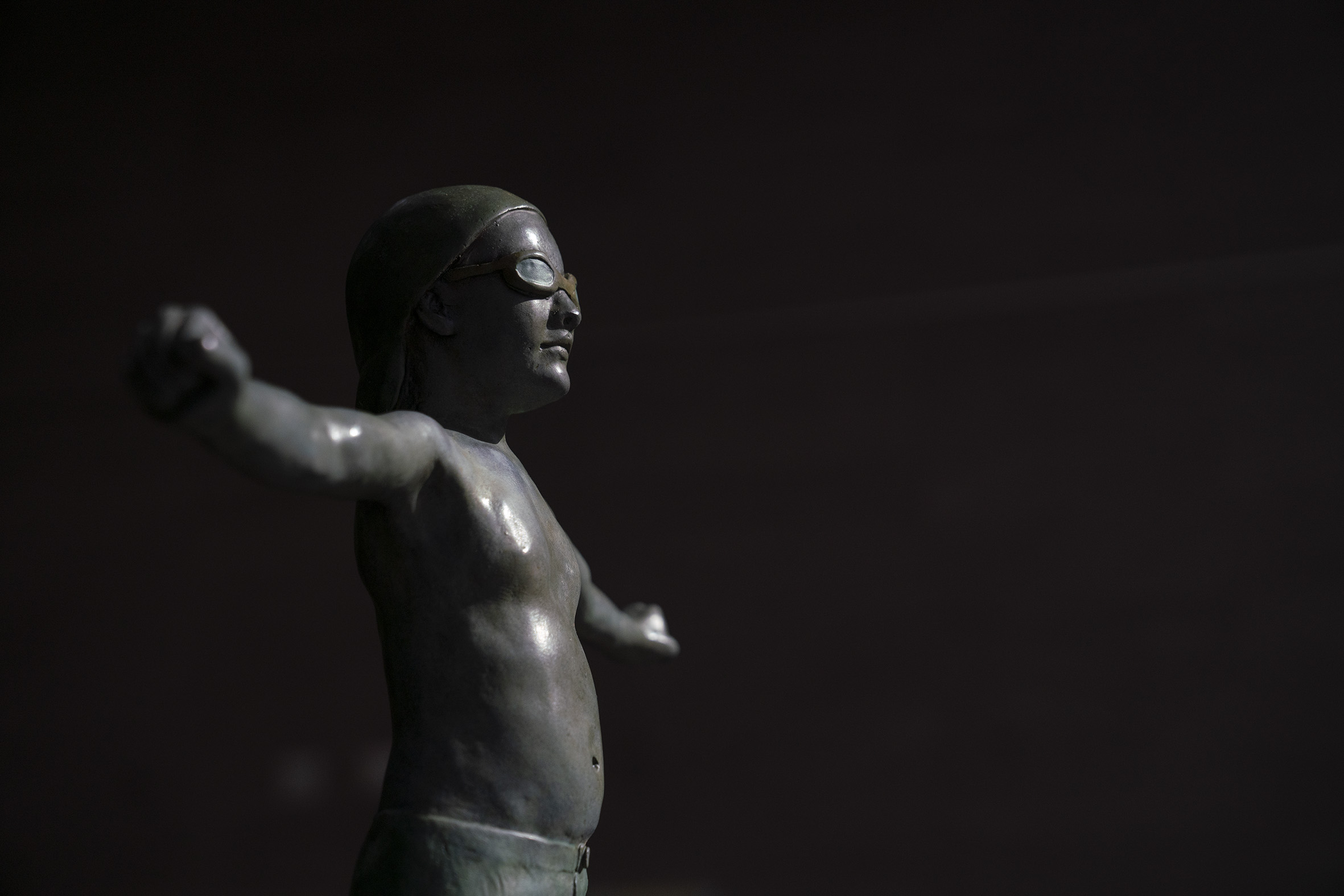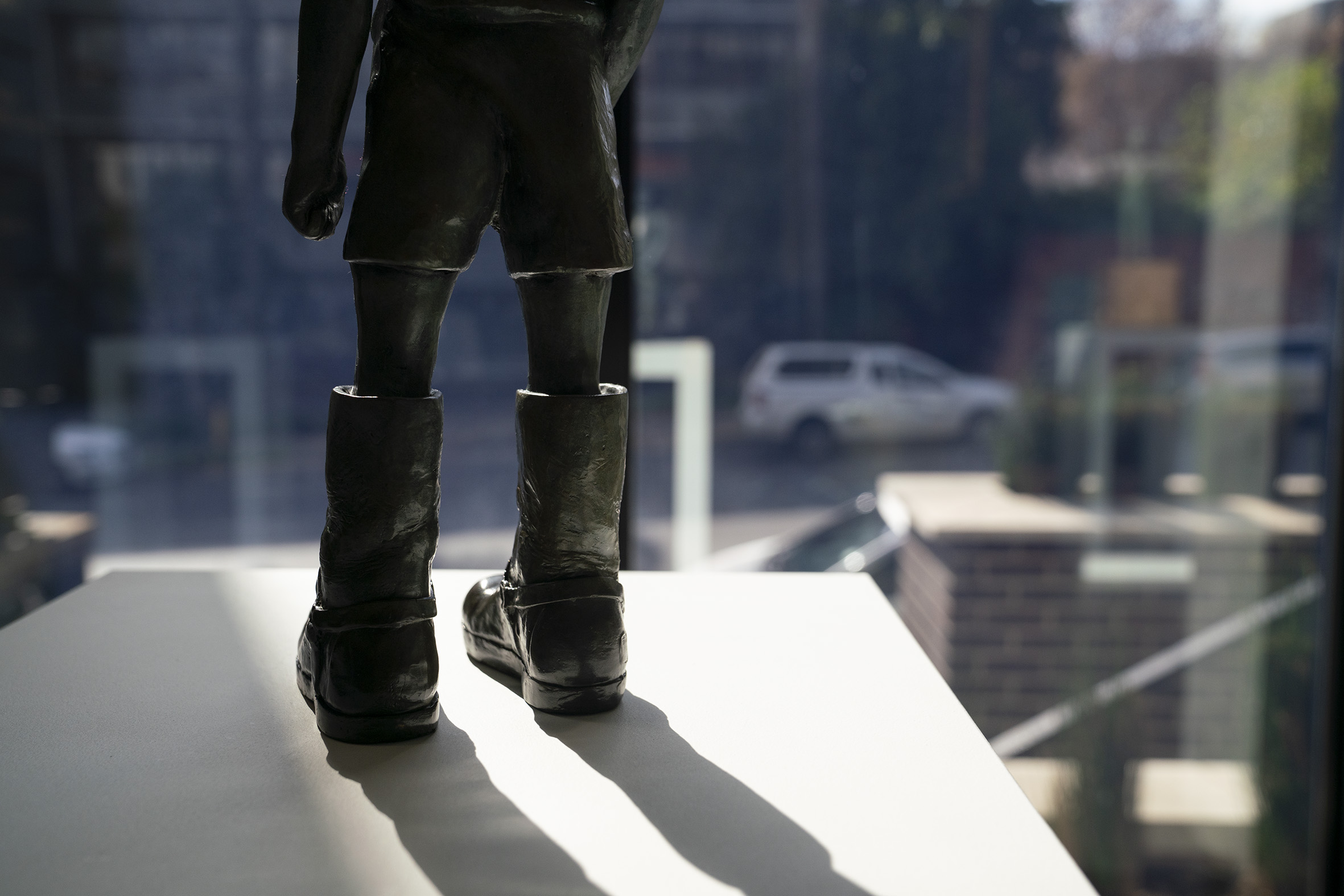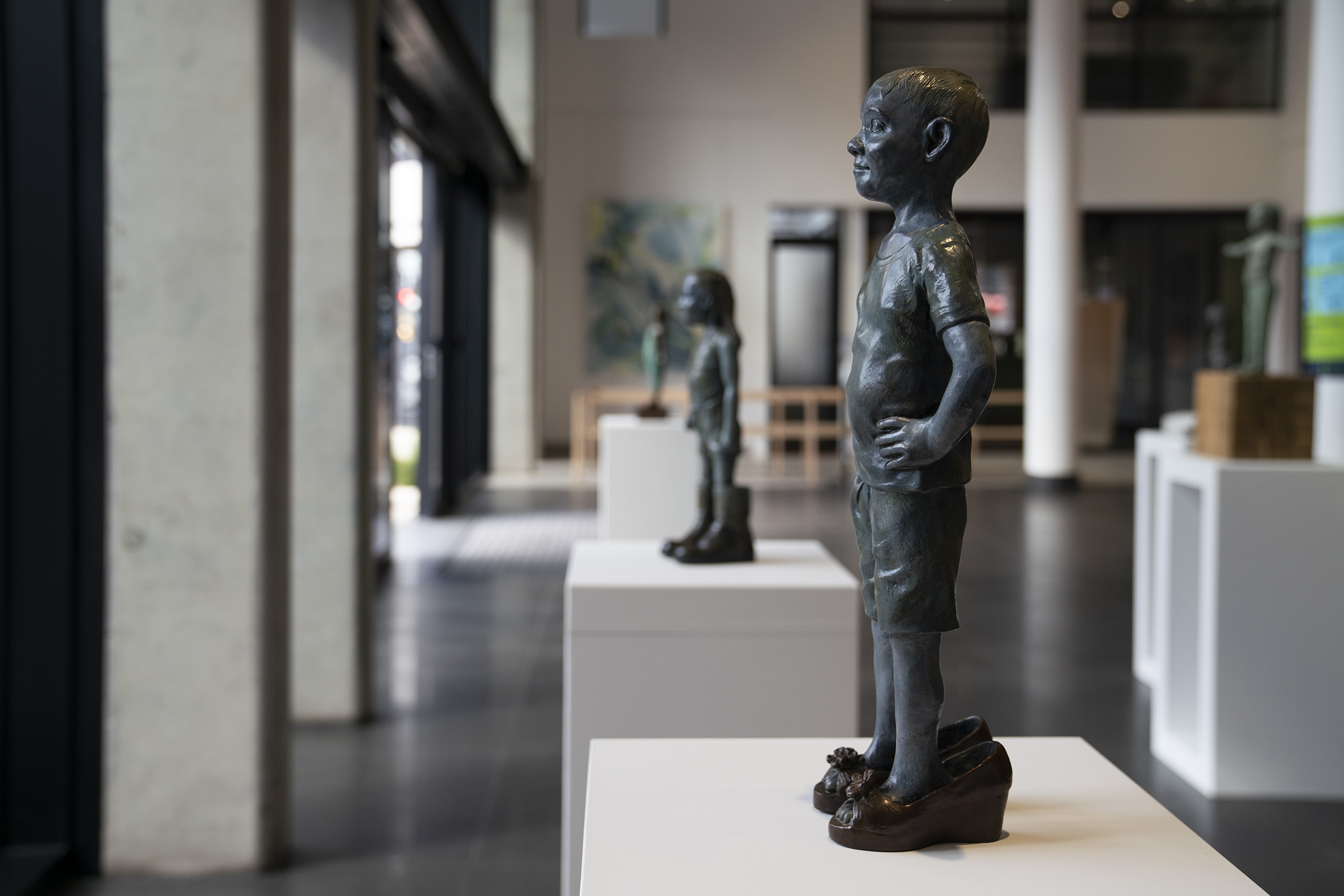Exposing the gender rules that need to be recast
In her new exhibition, Jenny Nijenhuis’ consistent wrestling to understand the origins of violence has led her to highlight the devastating damage of gendered messaging for children.
Author:
3 June 2022

What if violence also has its origins in the messages we are fed about ourselves as children? What if the boundaries, roles and expectations drummed into us, based on the gender we’re assigned at birth, become limiting rules, stereotypes, blind spots, rage even? And what if they are enough to constrain us from breaking cycles of violence?
These are difficult questions and themes that artist Jenny Nijenhuis has been turning over in her head for years and to which she tries to give expression in her new exhibition, Playing by the Rules. It opened in May at the Firestation satellite gallery in Rosebank, Johannesburg, and runs until 12 July.
“Regardless of what we don’t know, what we do know is that violence and gender-based violence in particular are an epidemic in this country. I believe boys and men learn to behave violently through what they are and were told as children, their social environment and how these things are processed.


“I want through this series of work to look at some of the dynamics in terms of how children are educated, or how girls and boys are brought up differently in society. What are the things that lead some boys to become violent men when at some point they were children who were not violent?” says the artist, who is mother to a 19-year-old son whom she watches navigate a world of powerful and problematic gender-based messaging.
Added to this are the impact of other realities children can’t control: their home environments, community attitudes and overarching social norms defined by patriarchy and outlooks that allow turning away from it to stand in as a solution.
Subtle but deliberate choices
At first glance, Nijenhuis’s half-life-size figurative sculptures appear as the artistic rendering of children, captured in the seemingly ordinary play and postures familiar of childhood. However, a closer inspection reveals other layers to the work. These intentionally point to questions of gendered messaging that she believes deserve better answers.
“I’ve chosen to work in bronze because bronze is expensive and about power, and it’s usually reserved for grand public monuments of important people, hardly ever of children, who are still hidden and voiceless in society,” she says.
The sculptures have a deliberate innocence, but their titles underscore how gendered messaging during childhood can become what is dangerously cast in stone – or bronze. Such messages can become the fixed tracks of “correct” behaviour, of what is prohibited versus what is expected, and also what are taboo and stigma and therefore should be regarded as needing to be guarded as secret. They can also cohere as a space where abuse, violence and silence are inculcated and produced, Nijenhuis believes.


In 2016, when she worked on her massive installation SA’s Dirty Laundry, in collaboration with Nondumiso Lwazi Msimanga and SoMa Art + Space, she came into contact with dozens of people who shared their stories in responding to her call for donations of worn and washed panties. The 3 600 pairs she collected were strung together across the Maboneng precinct in Johannesburg as a public statement on our rape and gender-based violence crisis.
“People left an intimate part of themselves, a trace of their person in donating such personal garments for a public installation,” says Nijenhuis. Many of these strangers shared their stories of sexual violence with her. These are the stories of sorrow and survival and the insights Nijenhuis picks up again, exploring the theme of violence and society, in Playing by the Rules. It was clear to her that there was still a need to find more ways to interrogate, lay bare and think about what is needed to break cycles of violence.
Playing by the Rules is her call to challenge gender-based stereotyping as the norm. It offers another way to address patriarchy, male identity in crisis and also violence.
Messages that harm
Nijenhuis, who years ago worked in communications before becoming a full-time artist, has experience in speech-language and communication pathology. She says before the age of three children don’t internalise limits. After that age, though, they grow – or shrink – into believing what they hear. “Boys don’t cry” or “girls aren’t as strong as boys” soon becomes “boys are more and girls are less”.
“What we are taught becomes what we must adhere to. It becomes so containing that we slowly, lesson by lesson, learn to give up on our own knowing and accept that maybe what we are being told is true.”
Nijenhuis adds that “perpetuating ingrained gender stereotyping” teaches all children “that violence is normal and unavoidable”.
For this exhibition she’s intentionally chosen a subtle rather than direct approach: it’s the innocence of children over worn panties. It’s also the domestic and small rather than public installation that acknowledges that it is all linked. Her approach is testing different entry points to have difficult conversations. This was an important way of thinking about getting her message across, and thinking about how violence can be reproduced through art.


Her message is still unequivocal once the viewer looks a little deeper. The sculptures are designed to juxtapose the binaries of boy or girl – boxes over which children don’t have a say. In one set of sculptures a boy is standing in a woman’s shoes that are oversized for his feet. It’s called Mommy’s Little Boy. In its opposite work Nijenhuis has sculptured a girl in a man’s boots and called the piece Daddy’s Girl. In these works there are undertones of homophobia and familial abuse kept as a sick secret that exploits familial bond as cover.
In another piece, Sit Like a Girl, a girl is sitting on the ground with her legs in a diamond shape. Her hands are placed underneath her dress. “For some people there’s discomfort in thinking about that piece, but I would say that they are in denial that children are curious about their sexuality. It’s again the trap of telling girls how they should behave, that they should keep their legs crossed and be responsible for protecting their ‘virtue’,” Nijenhuis says.
The exhibition space is in the foyer of the corporate building that has replaced the old fire station in Rosebank. Even exhibiting in this location switches the rules. It adds to Nijenhuis’s wish for the realities of gender stereotypes not be left out of spaces that are traditionally off limits to children.
She intends to expand on the collection of the Playing by the Rules sculptures. “This is a much longer-term project for me because there is still so much to explore,” she says. The answers may always elude her, but maybe the quest is not to find all the answers, just to prove that violence is almost always the wrong answer.
